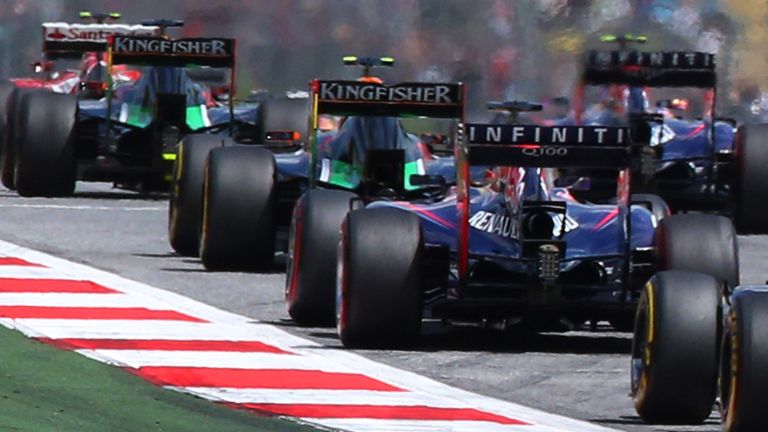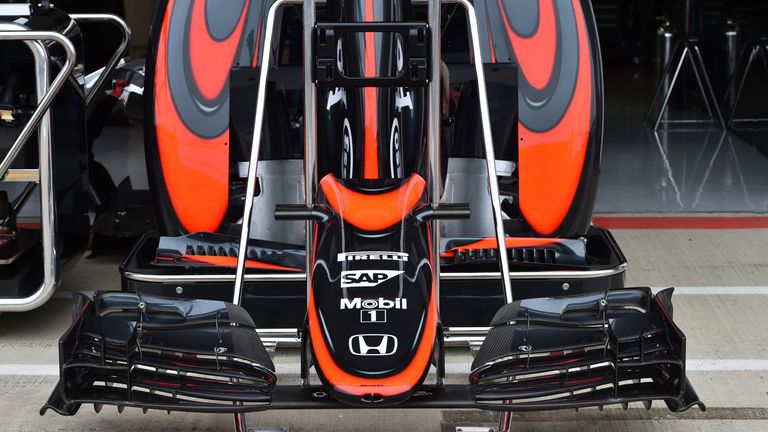Analysing the Strategy Group’s proposed revolution for F1
Wednesday 8 July 2015 11:44, UK
Decoding what the recommendations, released on the eve of this weekend's British GP, might mean for the future of F1...
‘Increased restrictions on driver aids and coaching received unanimous support and will be rapidly implemented, starting from this year’s Belgian Grand Prix - with a particular emphasis on race starts’
A proposal designed to put drivers “back in full control of the car”, the clampdown is expected to outlaw the computer-generated software which currently propel the cars off the line with the bare minimum of driver input. To analogise into layman’s terms, F1 drivers will now be pulling off their driveway-equivalent in a manual car rather than an automatic. A good - or relatively bad - start will, from next month onwards, be the result of skill and reaction rather than computer wizardry.
'Following the Austrian GP, an overhaul of the power unit penalties has been unanimously agreed and will be submitted to the F1 Commission via an express fax vote for an adoption at the World Motorsport Council in Mexico City next week, together with changes to the exhaust system that will improve engine noise for 2016.
'Furthermore, it was agreed to allow an extra power unit per driver in the first year to any new manufacturer entering the championship and, for the sake of fairness, the measure will apply retroactively to Honda for the 2015 season.
Faced with the realisation that the desperate plight of Honda upon their return to F1 is likely to be a prohibitive disincentive for new manufacturers to join the sport, an increase in the permitted engine allowance for any newcomers from four to five units is to be fast-tracked and also retrospectively applied to Honda.
The current rules only permit four units to be used without penalty this term, a reduction from last year’s figure of five. As Honda have already been humbled for breaching their 2015 allowance, demoting both Jenson Button and Fernando Alonso to the back of the grid in Austria, their McLaren-Hondas will be allowed to use a sixth this term without penalty.
'Mandate has been given to the FIA and FOM to propose a comprehensive set of measures for power unit development and cost of supply, including full review of the token system, increase in race fuel allowance, limits on the usage of engine dynamometers etc.'
A relatively-banal sounding proposal which could actually be one of the Strategy Group’s most important recommendations if government-endorsed analysis of the ‘cost of supply’ results in lower prices. Given that up to 25% of a team’s entire budget can be spent hiring engines, the results of the FIA and FOM’s study could financially make or break some of the grid’s lesser lights.
Elsewhere, the 'review of the token system and usage of engine dynamometers' will be particularly welcome to Renault who are reputedly prepared to leave the sport unless the restrictions on in-season development are relaxed. Amid ongoing speculation that the group may be ready to buy the Lotus outfit, F1's powerbrokers have apparently realised that the sport would be wise to avoid another high-profile exit.
‘...Together with changes to the exhaust system that will improve engine noise for 2016’
A populist proposal which will enjoy near-universal approval if, as pledged, the subdued 'tinny' sound of the V6 with a soundtrack more akin to F1’s deafening behaviour of yore. But how will it be done? Experiments with an exhaust-fitted ‘trumpet’ were, metaphorically and literally, quietly dropped 12 months ago.
‘Increased freedom of choice for tyre compounds has been confirmed and the modalities are being finalised with Pirelli for 2016.’
A proposal first put forward by Force India, the teams could be allowed to which type of compounds they want to use on a race-by-race basis. However, the cost of transporting a full quota of each type of tyres will not be cheap. If, as is likely, the teams will have to nominate their choice far in advance then the shake-up may not prove as dramatic as the ideal.
'A new set of regulations aimed at achieving faster and more aggressive looking cars for 2017, to include wider cars and wheels, new wings and floor shape and significantly increased aerodynamic downforce has been outlined and is currently being assessed by the teams.'
Faster and more aggressive looking cars courtesy of revamped aerodynamics sounds like nirvana. But the devil is in the subtle caveat: 'outlined and currently assessed by the teams' is tacit acknowledgement that the Strategy Group, otherwise unanimous in their recommendations, was unable to reach agreement on how to proceed. There is also the legitimate questions of how the rule-makers will balance the conundrum of increasing downforce while ensuring that overtaking, difficult at the best of times in F1, is not diminished further.
Several exciting and innovative changes to the qualifying and race weekend formats have also been discussed and are being evaluated by FIA and FOM for a 2016 introduction.
It may be at the bottom of the list, but plans to shake up the now long-established race weekend format perhaps represent the most dramatic of the Strategy Group’s proposals. While detail is sketchy at this stage, initial suggestions have pointed to the possible creation of a GP2-style ‘sprint race’ on a Saturday with the scrapping of the third practice session. Certainly the creation of any second race would represent a revolutionary step for F1, where the Grand Prix has traditionally been sacrosanct to the weekend’s centrepiece.
The current three-part knockout qualifying system has generally received few criticisms since being introduced in 2006, but F1’s session to form the grid has still had several facelifts over the years. Meanwhile, the two 90-minute Friday practice sessions could be altered to0 - especially as the sport faces a record-breaking 21-race schedule in 2016.






